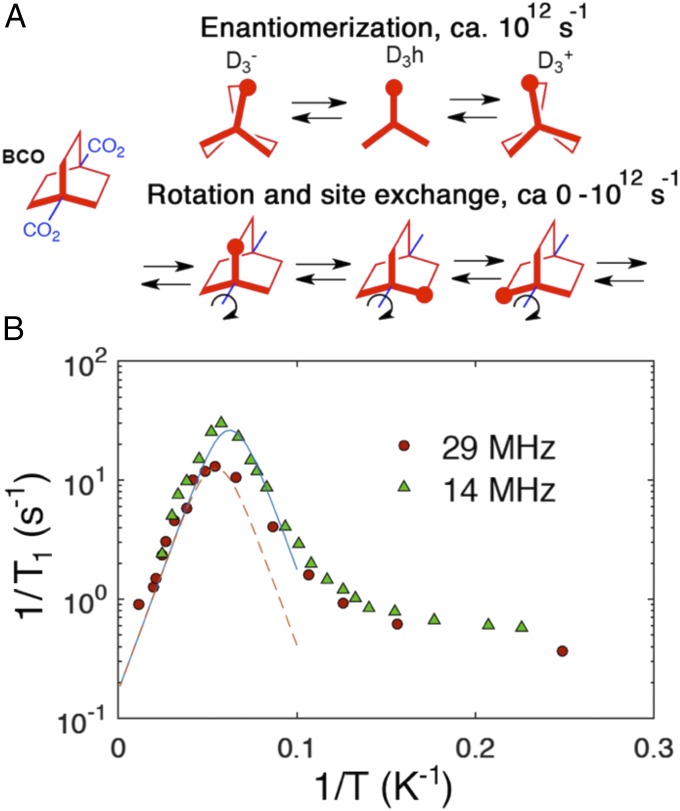Fig. 4.
(A) Dynamic processes of the 1,4-BCO rotators that may contribute to the spin-lattice relaxation of the 1H nuclei. Conformational twisting has the characteristics of a normal mode with frequencies that are too high (∼1012 s−1) to contribute to 1H spin-lattice relaxation in the megahertz (106–108 s−1) regime. By contrast, inertial rotation and rotation by a site-exchange mechanism has a small barrier and may be slowed down to megahertz regime and constitute an efficient spin-lattice relaxation mechanism. (B) 1H T1 relaxation data of the natural abundance BODCA-MOF from T = 2.3–80 K, plotted with a semilog scale for T1−1 vs. 1/T. The red circles correspond to data collected at a Larmor frequency νL= 29.49 MHz and the green triangles correspond to νL = 13.87 MHz. The high-temperature data from both high- and low-field experiments can be fit well to the Kubo–Tomita fit (dotted lines), both revealing an activation energy, Ea = 0.185 kcal mol−1, and a preexponential factor, τ0−1 = 4.7 × 1010 s−1.

